On View
More Than 2,500 New York City Subway Cars Are Now Artificial Underwater Reefs. See This Artist’s Remarkable Photos of Them Here
The images are now on view at the New York Transit Museum's Grand Central location.
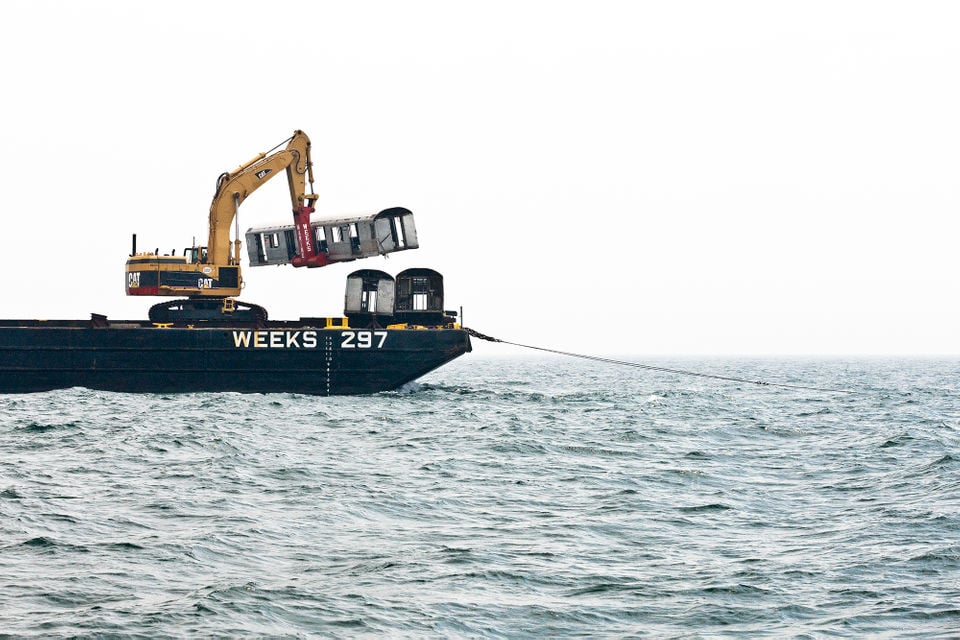
The images are now on view at the New York Transit Museum's Grand Central location.

Sarah Cascone

Off the coast of South Carolina, well below sea level, schools of fish swim through an artificial reef provided by an unexpected source: the Metropolitan Transportation Authority of New York.
From 2001 to 2010, the MTA, which runs the city’s subways, re-purposed thousands of decommissioned subway cars by submerging them into the ocean off eastern seaboard states such as New Jersey, Delaware, Maryland, and South Carolina. There, the urban relics become artificial reefs, providing safe habitats for marine life.
Industrial photographer Stephen Mallon spent two years documenting the project, and his images are now on view at the New York Transit Museum‘s Grand Central Terminal Annex in a new exhibition.
“Stephen Mallon sees these familiar subway cars and highlights the beauty of their design, the patina of their metal bodies, and the intricacies of their engineering,” said Amy Hausmann, the museum’s senior curator and deputy director for collections and exhibitions, in a statement.
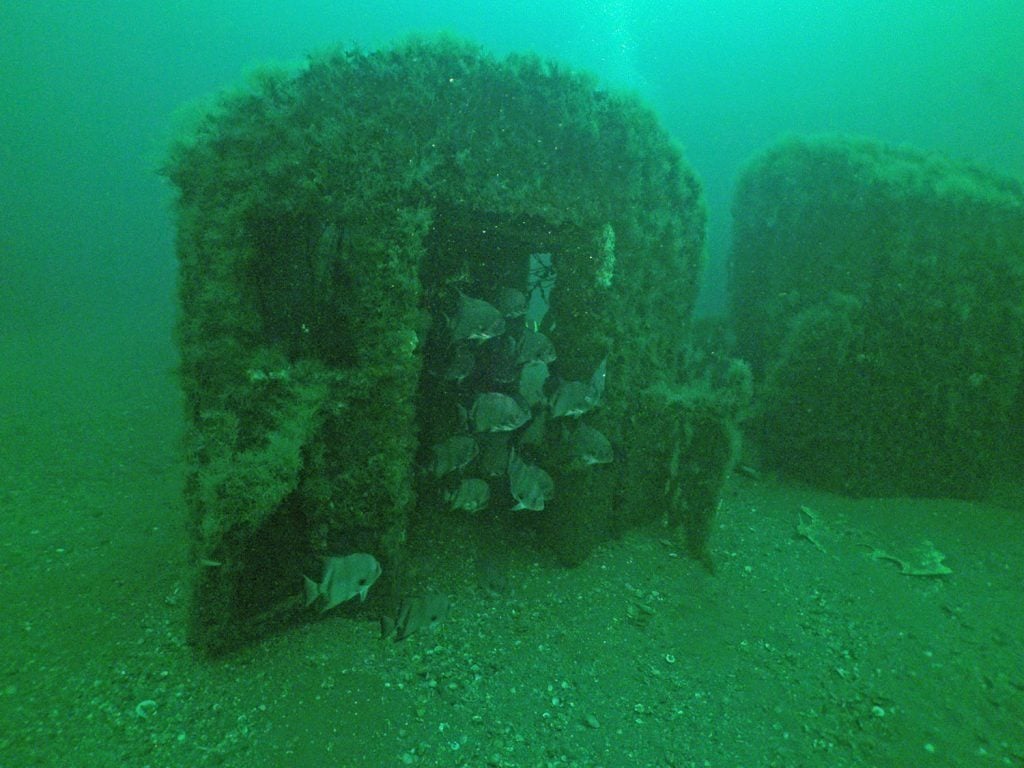
South Carolina’s Redbird Reef. Photo by Robert Martore, courtesy of South Carolina Department of Natural Resources.
Between 2008 and 2010, Mallon was on hand as the stainless steel cars were cleaned and stripped at an overhaul shop in Manhattan, after which they were loaded onto barges and dropped into the sea.
The photos in Mallon’s “Next Stop Atlantic” series are “abstract in many instances,” added Hausmann. “It is only when we see these stripped-down machines juxtaposed against the sweep of the Atlantic Ocean that we understand he is celebrating both their past and their future as a new home to thriving marine life.”
The program made new use fleets of New York classic Redbird cars, which were retired in 2000, and the Brightliner cars, some of which still operate on the A and C subway lines. Having once transported millions of New Yorkers across the five boroughs, the train cars now attract such varied species as sea bass, tuna, mackerel, flounder, blue mussels, sponges, barnacle, and coral.
By almost any measure, the program was a success, saving the MTA $30 million in disposal costs and helping rebuild the environment. By the time the subway reefing project officially ended on Earth Day 2010, 2,580 subway cars were placed in sites along the coast. (The New York City Department of Environmental Protection has since created an artificial reef for oysters in Jamaica Bay with 5,000 porcelain toilets discarded by city schools.)
See more photos from Mallon’s Transit Museum exhibition below.
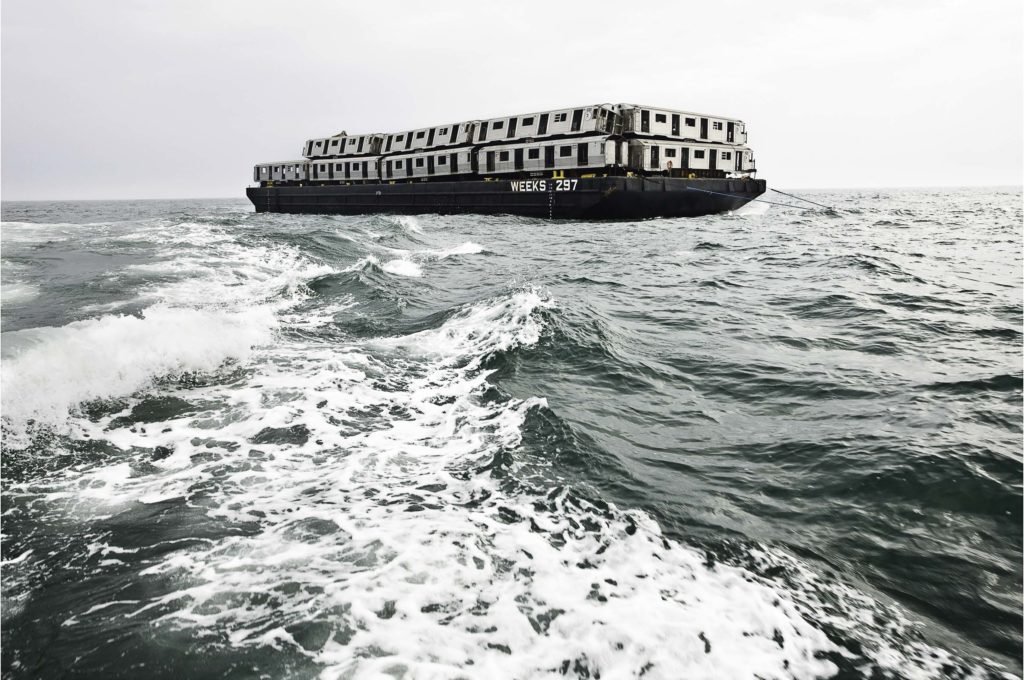
Stephen Mallon, Weeks 297 (2008). Photo courtesy of the New York Transit Museum.
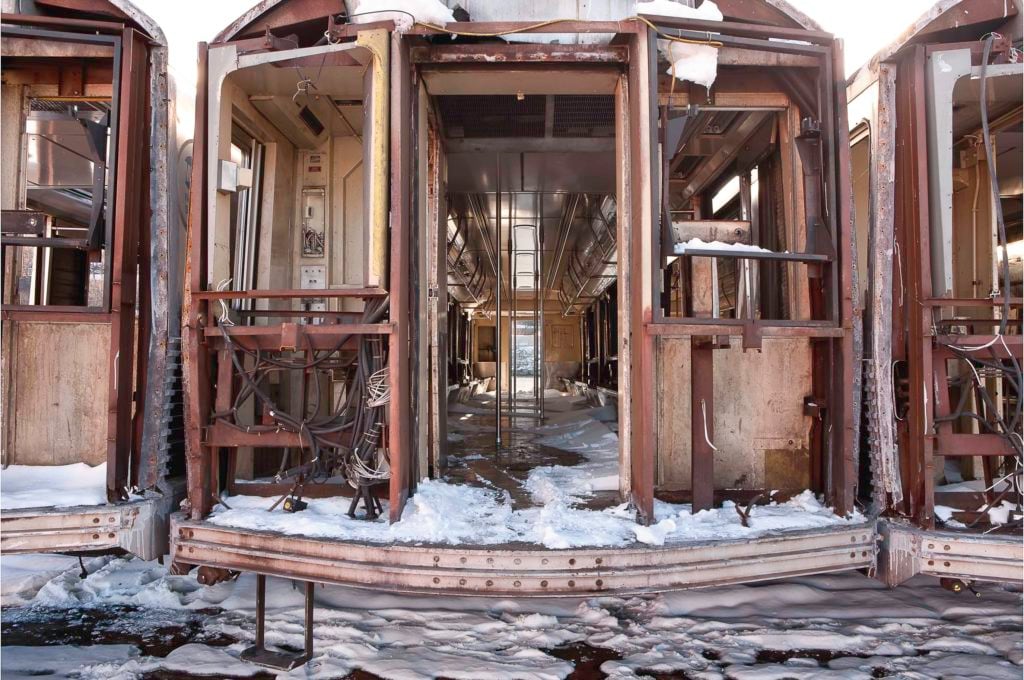
Stephen Mallon, Transfer (2009). Photo courtesy of the New York Transit Museum.
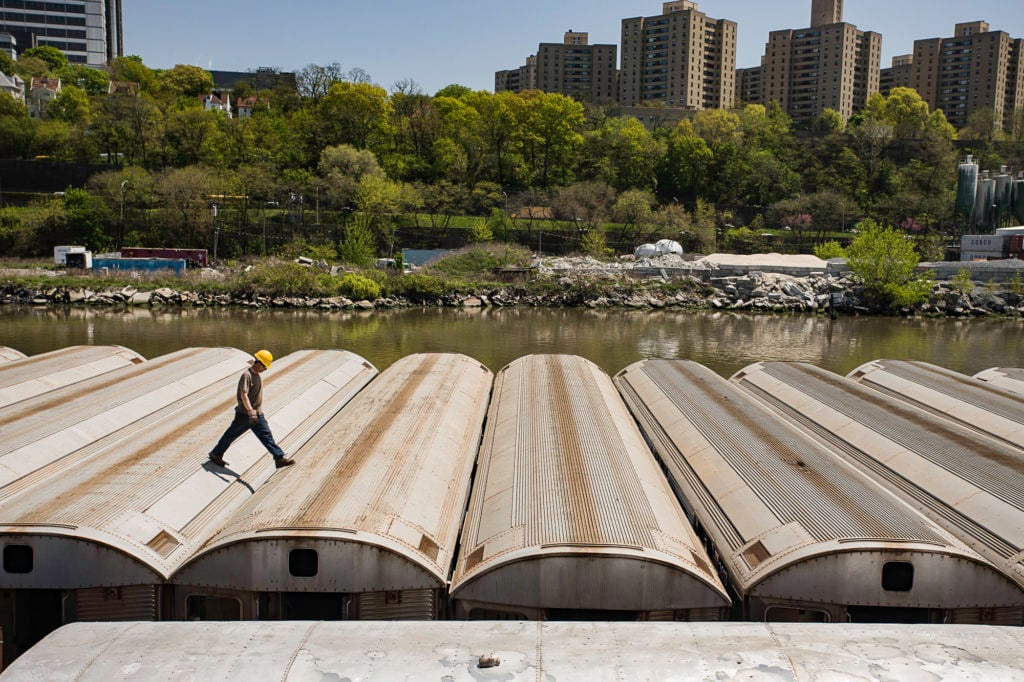
Stephen Mallon, Abbey Road (2008). Photo courtesy of the New York Transit Museum.
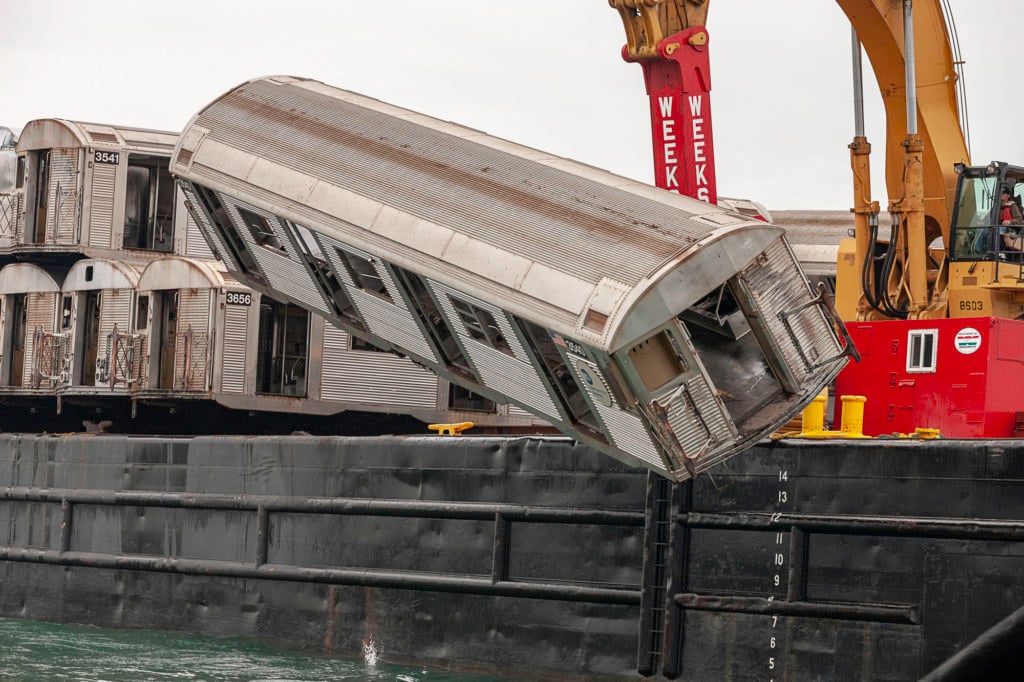
Stephen Mallon, Air Break (2008). Photo courtesy of the New York Transit Museum.
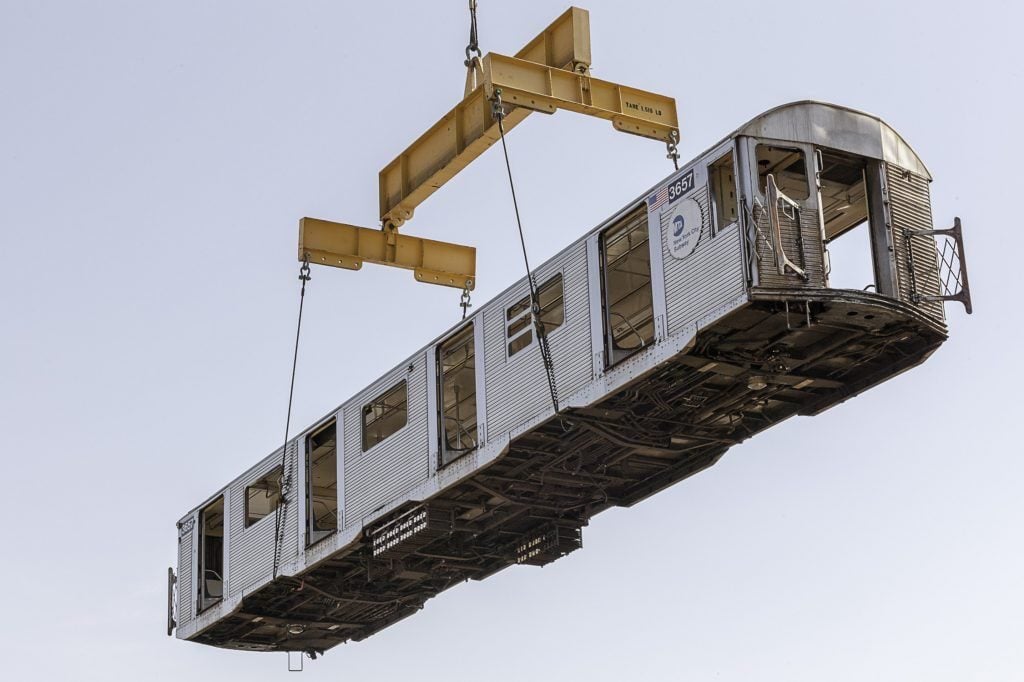
Stephen Mallon, Mind the Gap (2008). Photo courtesy of the New York Transit Museum.
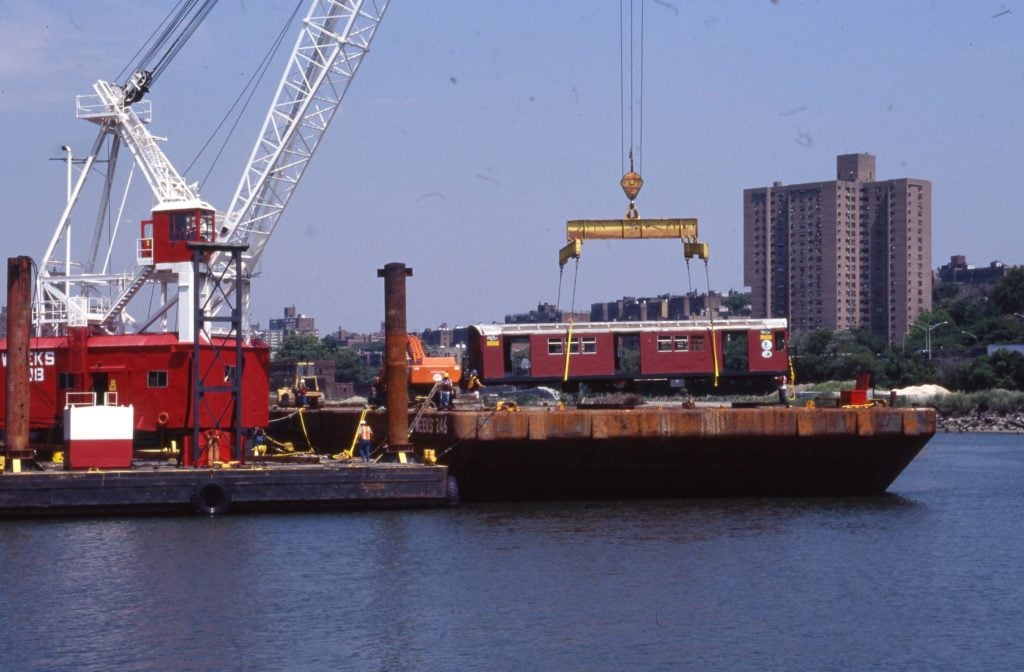
Redbird Reefing (2001). Photo courtesy of the New York Transit Museum.
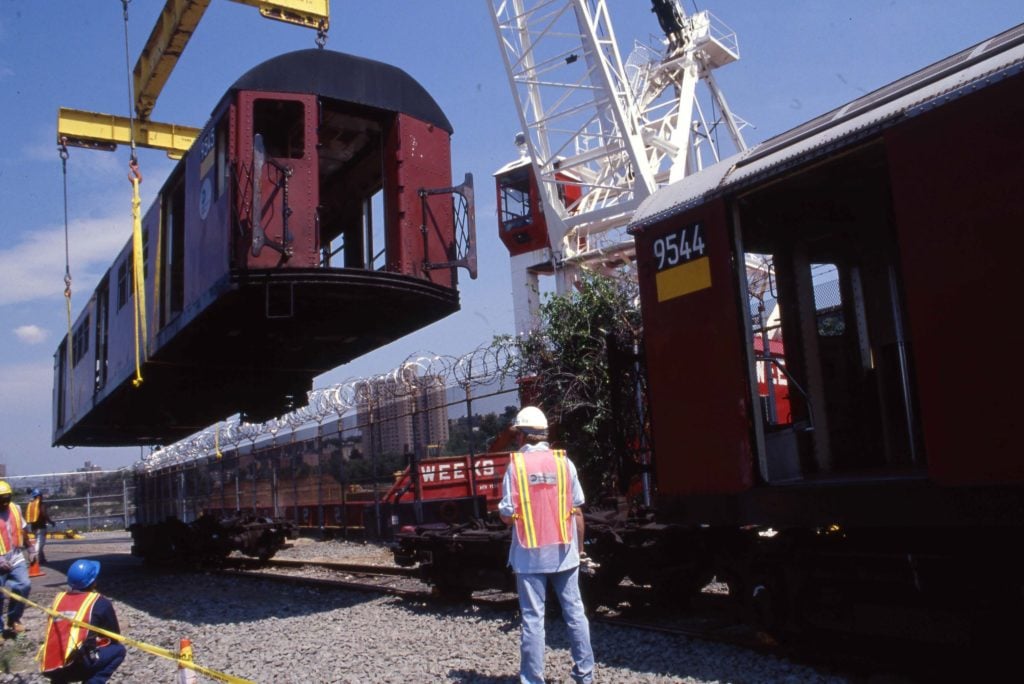
Redbird Reefing (2001). Photo courtesy of the New York Transit Museum.
“Sea Train: Subway Reef Photos by Stephen Mallon” is on view at the New York Transit Museum’s Grand Central Gallery, in the shuttle passage on 42nd Street and Park Avenue through May 4, 2019.